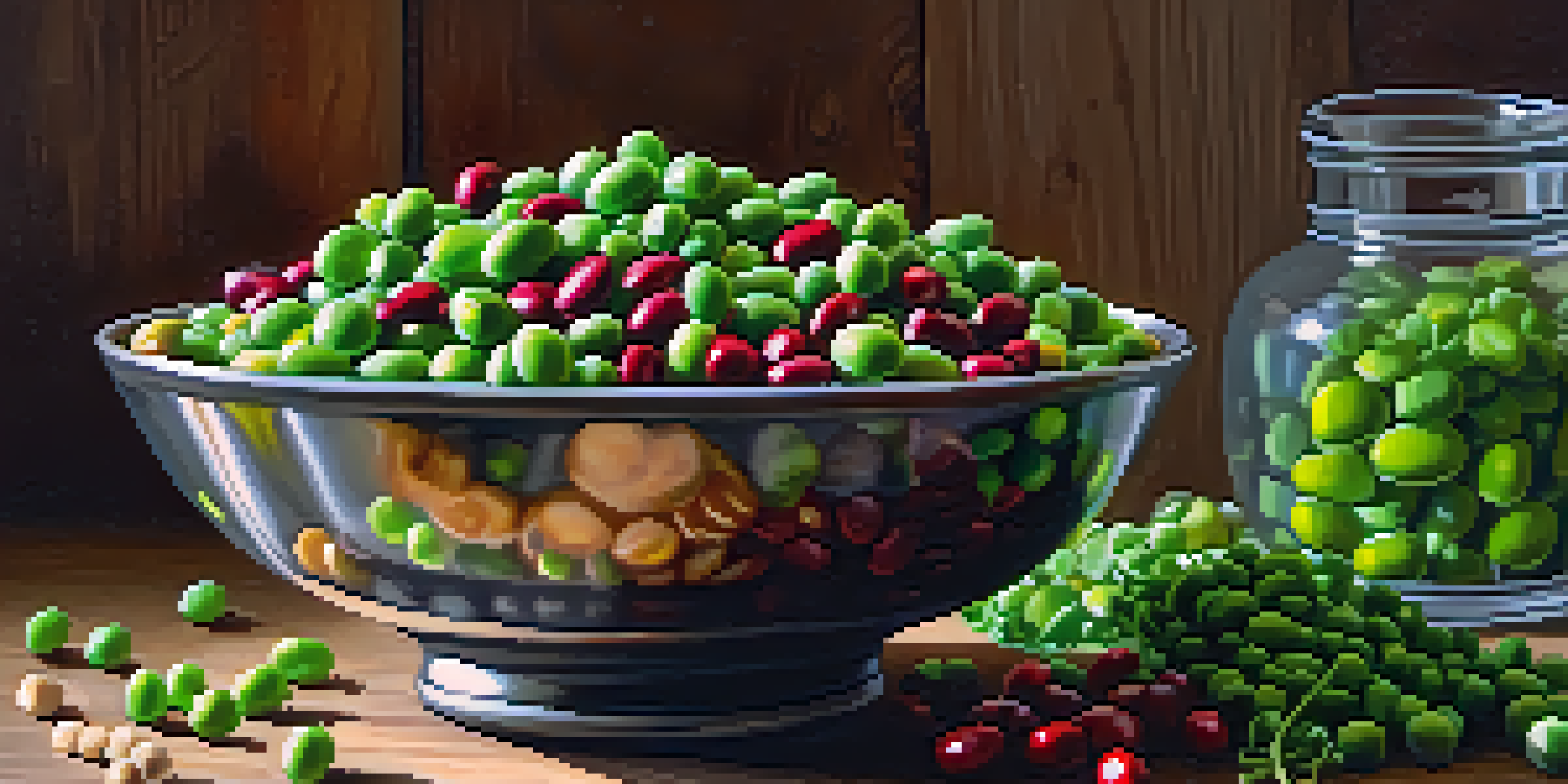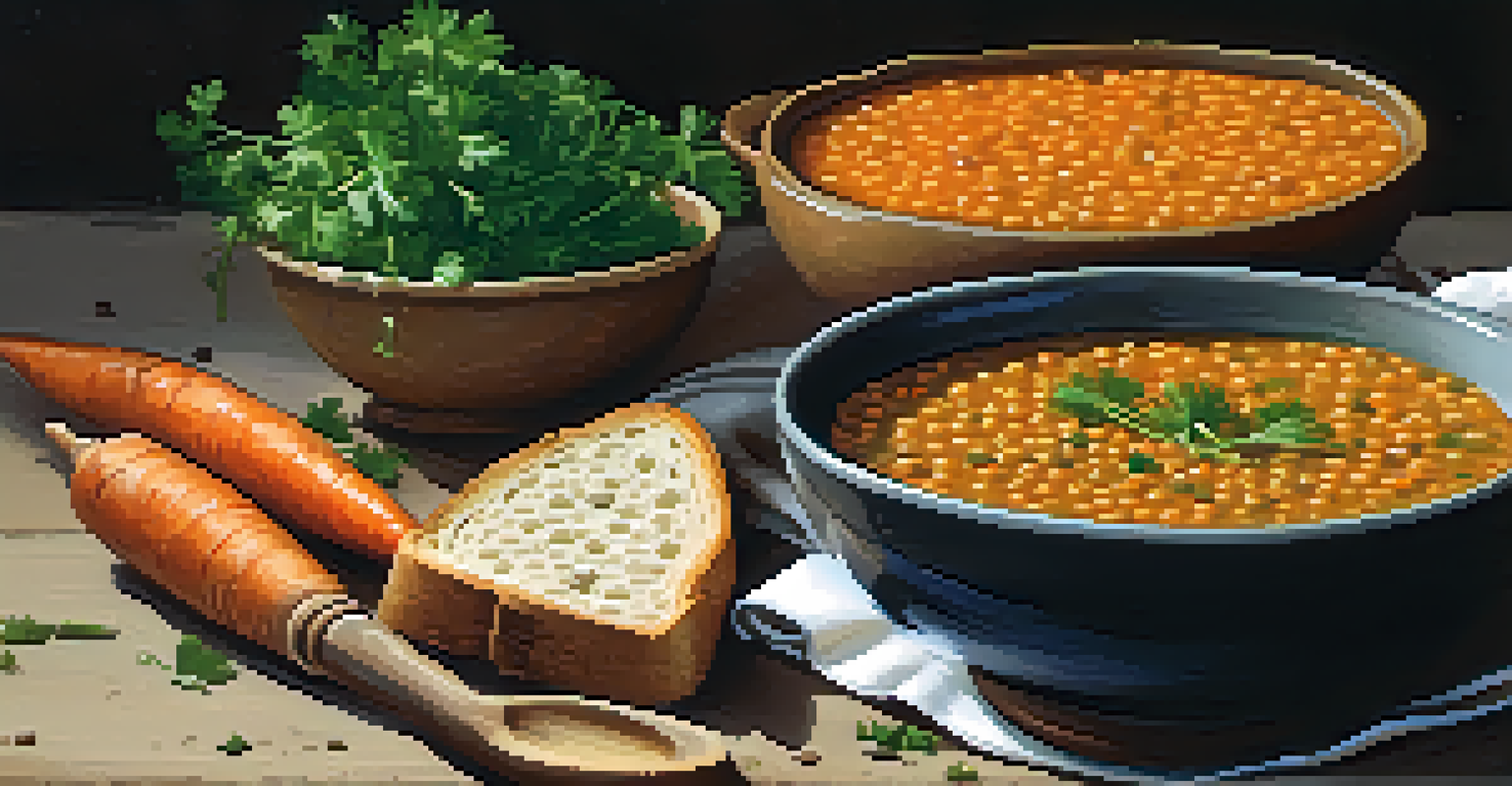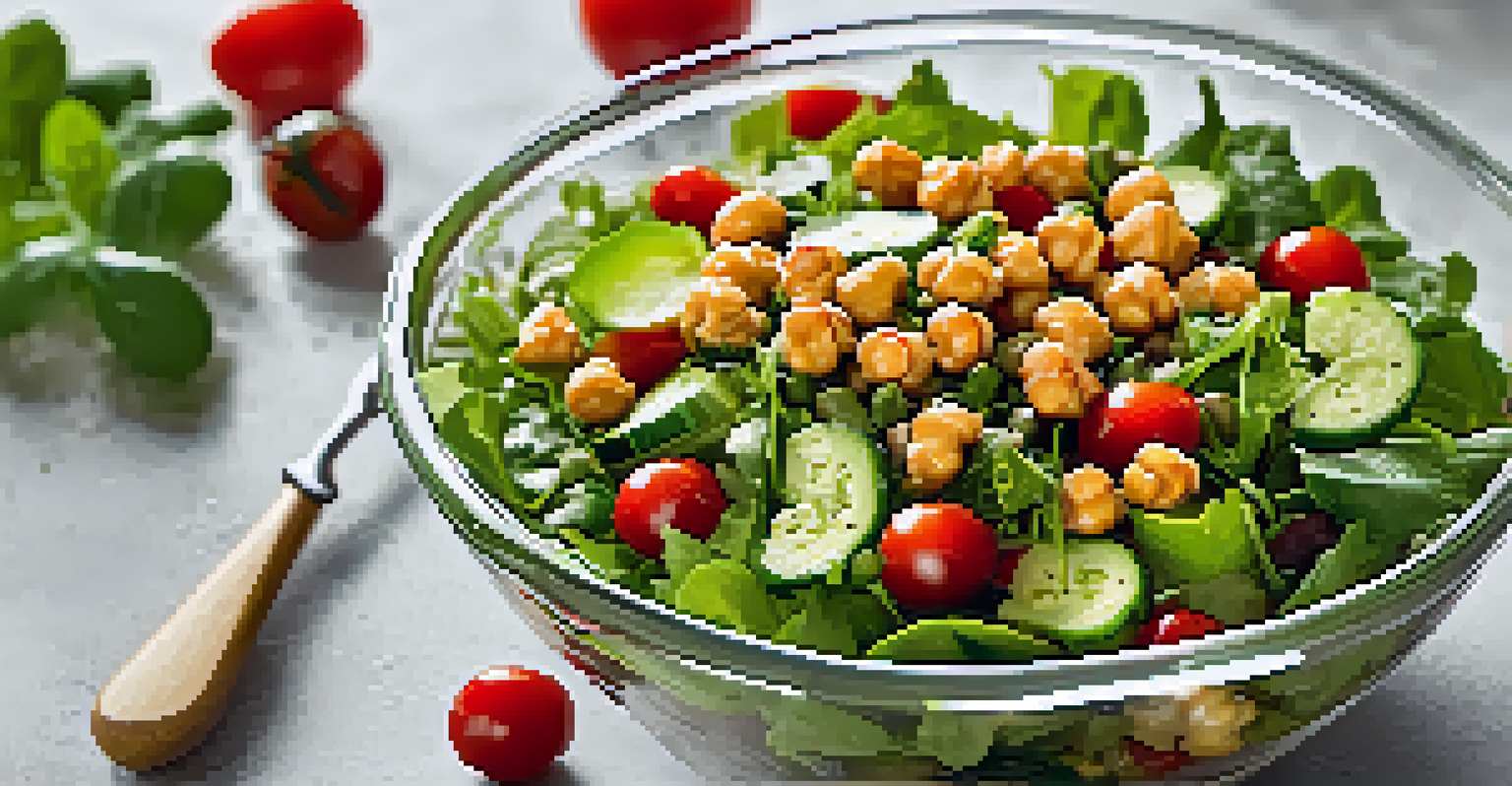Exploring Legumes: Top Plant-Based Protein Sources for Health

What Are Legumes and Why They Matter
Legumes are a family of plants that include beans, lentils, and peas, known for their edible seeds. These little powerhouses are packed with nutrients and offer a plethora of health benefits. Incorporating legumes into your diet can help you meet your protein needs, especially if you're following a plant-based lifestyle.
Legumes are the cornerstone of a healthy diet, delivering vital nutrients and protein while being a sustainable food source.
Not only are legumes versatile in cooking, but they also come with a wealth of fiber, vitamins, and minerals. They can be used in salads, soups, and even as meat substitutes, making them a staple for anyone looking to boost their diet. Moreover, their low glycemic index means they can help stabilize blood sugar levels.
Related Resource
As we explore the world of legumes, you'll discover some of the top sources of plant-based protein and how they can enhance your meals and overall health.
Lentils: Tiny Nutritional Giants
Lentils are perhaps one of the most popular legumes, and for good reason. They are rich in protein, offering about 18 grams per cooked cup, along with essential nutrients like iron and folate. This makes them an excellent choice for anyone, especially vegetarians and vegans, who need to ensure they’re getting enough protein.

One of the best things about lentils is their quick cooking time. Whether you're making a hearty lentil soup or a refreshing lentil salad, they can be on your table in about 20 minutes. Plus, their mild flavor makes them incredibly versatile, allowing you to pair them with various spices and ingredients.
Legumes: Nutrient-Rich Protein Sources
Legumes like lentils, chickpeas, and black beans are packed with protein, fiber, and essential nutrients, making them ideal for a healthy diet.
So, if you're looking to add a protein punch to your meals, consider incorporating lentils into your weekly meal plan—they're not just nutritious, but delicious too!
Chickpeas: The Versatile Legume
Chickpeas, or garbanzo beans, are another fantastic legume, known for their nutty flavor and buttery texture. They pack about 15 grams of protein per cooked cup, making them an excellent addition to salads, hummus, and stews. Their versatility is unmatched, as they can be roasted for a crunchy snack or blended into creamy dips.
Eat legumes and you’ll feel like a superhero; they are packed with protein and nutrients that fuel your body.
Beyond protein, chickpeas are also a great source of fiber, which promotes digestive health and keeps you feeling full longer. This makes them a staple for those looking to manage their weight or improve gut health. Plus, they are rich in vitamins and minerals, including magnesium and potassium, which are essential for overall health.
Related Resource
With their ability to absorb flavors, chickpeas can easily elevate any dish, making them a favorite among home cooks and professional chefs alike.
Black Beans: A Flavorful Protein Source
Black beans are not only delicious but also packed with protein, offering about 15 grams per cooked cup. Their rich, earthy flavor makes them an excellent addition to a variety of dishes, from tacos to soups to salads. They are especially popular in Latin cuisine, where they add depth and nutrition to meals.
In addition to protein, black beans are loaded with antioxidants, which help fight free radicals in the body. They also contain complex carbohydrates, providing sustained energy without causing blood sugar spikes. This makes them a smart choice for athletes and those with active lifestyles.
Versatile Cooking Options with Legumes
These legumes can be incorporated into various dishes, from soups to salads, providing both flavor and nutritional benefits.
Incorporating black beans into your meals can enhance both flavor and health, proving that eating well doesn’t have to be boring!
Kidney Beans: Nutritional Powerhouses
Kidney beans are easily recognizable by their deep red color and kidney-like shape. They are another excellent source of plant-based protein, boasting around 15 grams per cooked cup. Their firm texture holds up well in soups and chili, adding heartiness to any dish.
These beans are also rich in fiber and various vitamins, including B vitamins, which are crucial for energy production. They help support overall health by promoting healthy digestion and regulating cholesterol levels. Plus, their vibrant color is a bonus, making your meals visually appealing.
Related Resource
So, whether you're whipping up a classic chili or a colorful salad, kidney beans can be the perfect addition to boost both nutrition and flavor.
Peas: A Sweet Protein Option
Peas, particularly green peas, are often overlooked but are a fantastic source of protein, providing about 8 grams per cooked cup. Their sweet flavor makes them a delightful addition to salads, pastas, and even smoothies. Plus, they’re quick to cook and can be enjoyed fresh, frozen, or dried.
In addition to protein, peas are packed with vitamins A, C, and K, which contribute to overall health. They’re also rich in fiber, aiding in digestion and promoting a feeling of fullness. This makes them a great choice for those looking to maintain a healthy weight.
Easy Ways to Add Legumes to Meals
Experimenting with canned or dried legumes in your meals can simplify meal prep while introducing new textures and flavors.
When you think of legumes, don’t forget about peas—they're not just for side dishes; they can be a key ingredient in many wholesome meals.
Soybeans: The Complete Protein
Soybeans are unique among legumes as they contain all nine essential amino acids, making them a complete protein source. This means they can provide the same protein benefit as meat, which is particularly valuable for those following vegetarian or vegan diets. A cup of cooked soybeans delivers about 29 grams of protein, making them one of the most protein-rich legumes available.
Beyond protein, soybeans are rich in healthy fats and are often used to create products like tofu, tempeh, and soy milk. These products are incredibly versatile and can be used in a wide variety of dishes, from stir-fries to smoothies. Plus, soybeans are packed with antioxidants, which contribute to heart health.

Incorporating soybeans into your diet can offer a nutritious alternative to animal proteins while also diversifying your meal options.
Incorporating Legumes into Your Diet
Adding legumes to your diet can be simple and fun. Start by incorporating them into your meals a few times a week—think lentil soups, chickpea salads, or black bean tacos. You can also experiment with different types of legumes to discover new textures and flavors that you enjoy.
For those new to cooking with legumes, canned varieties can be a convenient option. Just rinse them before use to reduce sodium levels. If you’re feeling adventurous, try cooking dried legumes, which can be more economical and allow for greater flavor customization.
Remember, the key is to get creative and find ways to enjoy these nutritious foods. With so many options available, legumes can easily become a staple in your kitchen!